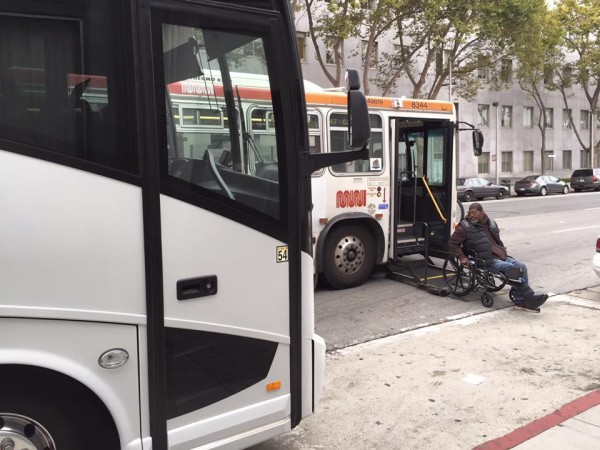The Municipal Transportation Agency Board of Directors voted Tuesday to make the transit lanes on Geary permanent.
Unfortunately, the agency didn’t make clear that those lines are only for public, not private, buses.

Chair Gwyneth Borden addressed staff member Lis Brisson, asking about regulation of access to transit lanes. Borden remarked, “The way the lanes work, the state regulates access [to transit only lanes], not us locally.”
She should have asked City Attorney Susan Cleveland-Knowles, who was present, about the law, not Brisson, because she’s wrong. We also regulate access to these lanes here in San Francisco.
This remark gave Brisson an opportunity to once again obfuscate the difference between “transit” and “buses.” Brisson stated that the word “bus” links up with the California Vehicle Code, which it does, ignoring the separate California Vehicle Code definition of “transit” and all other state and local laws that regulate access to transit only lanes. She even called the transit only lanes super carpool lanes.
(Brisson addresses the legal aspects about two hours and 15 minutes into the meeting.)
But no environmental impact report has ever analyzed the impact of private bus operations on the flow of Muni, Golden Gate Transit, SamTrans, and any other public transportation systems that might one day need these lanes as part of our climate emergency response.
Brisson did say that some kind of pre-COVID observation had been done, but again, this was not included in any report.) And certainly, no environmental review document ever mentioned the term: super carpool lanes. (In fact, staff hadn’t even attached the latest “environmental review” to the documents supplied for the meeting.)
The City and County of San Francisco has no power to restrict the number of private buses — tech shuttle buses, casino buses, tour buses, Academy of Art buses, or any future Uber buses operating in general city traffic lanes.
(And let’s not forget: Uber in its IPO filings noted that part of its longterm vision is to destroy public transit and replace it with Uber buses.)
As of June 2019, 4,248 get-out-of-jail-free placards had been issued to tech shuttle buses and others (Kaiser and UCSF shuttles, for example) to operate with impunity in select public bus stops—also in violation of the vehicle code (22500.i). See Request for Information Item 190606.02. The average number of these buses with placards operating Monday through Friday was 711.
These buses operate in select parts of the city during concentrated hours. I have seen them myself obstructing Muni buses on Park Presidio and Geary, and Edward Mason has been doing yeoman’s work for years tracking these obstructions in Noe Valley. (Some people think the SFMTA should be doing this work.)
As we recover from the pandemic, these private buses are going to be back in operation, cluttering up our bus stops, driving up home prices and driving out lower income people, and now, potentially, obstructing our public buses in transit only lanes.
Compare these numbers, 4,248 and 711, to the total number of rubber-tire vehicles in the Muni fleet: According to the 2019 Annual Report, issued in January 2020, Muni had 901 rubber tire buses and trolleys operating in the entire city, 24/7.
And the SFMTA, which secretly allowed the tech buses to use Muni stops, doesn’t seem ready to enforce the rules to keep them out of transit lanes.




